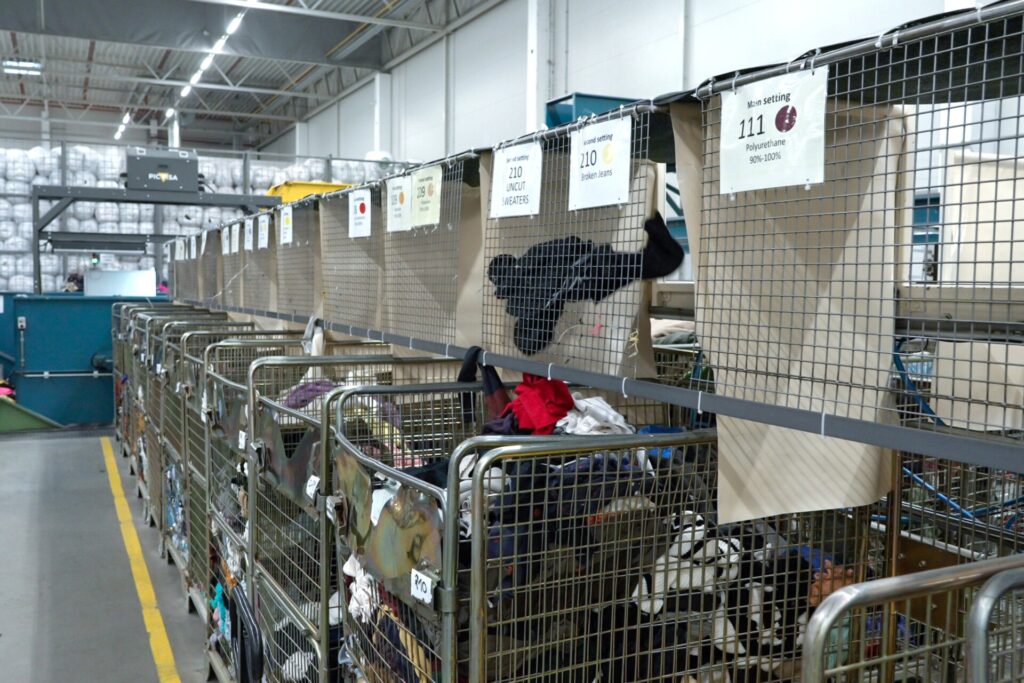Three Levels of Textile Sorting
To enable reuse — where garments are kept intact for a second life — sorting must go beyond fiber detection. ECOSORT adapts to this challenge by working on three levels: garment typology, characteristics, and condition.
1. Garment Typology (Shape-Based Recognition)
At the base level, ECOSORT uses AI-powered shape detection to distinguish between garments like shirts, pants, and jackets. The challenge here lies in presentation — items must be well laid out to recognize their form. Automated feeding systems help ensure garments are properly extended before detection.
2. Garment Characteristics (Pattern, Color, and Season)
Going further, ECOSORT can classify garments based on pattern (printed vs plain) and — more innovatively — by seasonality. By combining NIR spectrometry (for fiber) with RGB imaging (for color), the system can infer whether a garment is likely meant for summer, winter, or mid-season. This functionality is already in use at facilities like Fratelli Esposito, where separating by season enhances the resale value of sorted textiles.
3. Garment Condition (Wear and Damage Detection)
The most complex level is evaluating garment condition. This requires analyzing multiple zones on a single item to detect wear, damage, or staining. While this capability is still developing, ECOSORT’s integration of high-resolution imaging and evolving AI models positions it to tackle this frontier soon.
The Technology That Makes It Work
ECOSORT integrates NIR cameras to detect fiber types, RGB sensors to analyze color, and AI algorithms to assess garment shape. Materials pass through a controlled lighting zone, where spectral and visual data are collected in milliseconds. If a textile matches the sorting criteria, high-speed solenoid valves activate and direct the item to its assigned category.
The system’s modular build includes a feeding conveyor, camera zone, and ejection unit, with all functions governed via a central touchscreen interface. Robust construction ensures functionality in dusty, high-throughput industrial environments.
Practical Results and Circular Benefits
In PICVISA’s testing protocols, ECOSORT configurations are tailored to the material stream — whether casualwear, mixed garments, or retail returns. Simulation tools help fine-tune detection sensitivity and accuracy. By mimicking real-world flow conditions, the system ensures reliability at scale.
Importantly, ECOSORT also connects seamlessly with pre-processing systems such as ozone chambers (for disinfection and odor removal) and post-processing systems as balers (for storage and transport), and even garment cutters (for eventual recycling if reuse isn’t possible). This holistic approach makes it a versatile component in modern reuse and recycling lines.
Why Reuse Sorting Matters
With over 74% of collected textiles being garments — and a third of those made from fiber blends — textile reuse is a more sustainable and economically viable pathway than fiber recovery in many cases. ECOSORT supports this by enabling higher-value recovery, reducing reliance on downcycling and incineration.
By sorting garments with greater detail and intelligence, PICVISA helps extend the usable life of clothing and drives meaningful progress toward a circular textile economy.








